Running an online business is all about getting your visitors to say yes.
That means understanding how your visitors make decisions.
While we’d all like to think we’re logical, most of our decisions are deeply influenced by emotion.
Here at Sumo, we love to use emotionally charged words to move readers to action:
And to choose visuals that vividly show our results, like the time we used our own tools to double our email list in four months:
Using emotional persuasion to improve your messaging is a powerful way to get more of your visitors to say yes.
In this article, we’ll dive into research-driven emotional persuasion techniques you can use right away to increase conversions.
What is Emotional Persuasion?
Emotional persuasion is arousing emotion to influence decision-making processes.
In online marketing, emotional persuasion techniques fall into three primary categories:
- Words
- Visuals
- User experience
When successful, these factors combine to create an emotional experience that stirs visitors to action.
Of course, we all like to think we’re totally rational decision-makers. But that couldn’t be further from the truth. Our recent experience with panic-buying during the early weeks of the coronavirus pandemic makes this clear.
Remember watching people scramble to buy necessities? Pantry staples like canned goods, dried beans, and rice disappeared from supermarkets, along with hygiene supplies like hand sanitizer and toilet paper.[*]
It’s a vivid reminder that our buying behavior is often driven primarily by emotion — in this case, fear and anxiety.[*]
Why Emotional Persuasion Is Necessary
We'd all like to think our decisions are based on logic and information, but as Stanford psychologist BJ Fogg notes, there are two serious problems with that idea.
First, people tend to look for information that confirms their existing attitudes. If you give them information that goes against what they already think, they'll often find a way to dismiss it. Psychologists call this confirmation bias.
Second, even if you can change peoples’ attitudes, they may not take action. Millions of people want to eat a healthier diet, stop smoking, or start working out. But they don’t actually do it. Simply having the right attitude doesn’t necessarily translate into the right behavior.
Fogg calls it the information-action fallacy: “information alone does not reliably change peoples’ behavior.”[*]
And it highlights a point long known to psychologists: we rely on emotions to guide us in most of our decision-making.
In a landmark 1994 study, neuroscientist Antonio Damasio studied patients who had sustained damage to the ventromedial prefrontal cortex, a key area of the brain for integrating emotion and cognition. Damasio found that these patients had a reduced ability to feel emotion, and as a result, were less able to make rational choices.
Damasio discusses a famous patient known as Elliot, who lost the ability to feel emotion after his prefrontal cortex was damaged during brain surgery to remove a tumor. Previously, Elliot had been an accomplished businessman and a caring husband.
But after the surgery, his life fell apart.
He began to obsess over trivial decisions like whether to use a blue or black pen, and his performance at work deteriorated so dramatically that he lost his job. Soon he became involved in a shady investment scheme that landed him in bankruptcy. He got divorced, then remarried and divorced again. Eventually, he had to move back in with his parents.[*]
Decision-makers normally rely on emotional and bodily signals to help guide us, such as helping us sense potentially negative outcomes in high-risk situations. Without those signals, Elliot was lost. His case shows us that emotion plays a critical role in helping us make rational decisions.
Now that we know emotions can powerfully influence our decisions, let’s take a closer look at how.
How Emotional Persuasion Works
When marketers talk about emotion, they often use a valence-based approach. This approach looks at emotion from two distinct angles:
Is the emotion positive or negative? High-valence emotions like pride or happiness are positive, while low-valence emotions like anger or fear are negative.
Is the emotion intense or mild? Anger and excitement are high-arousal emotions, while sadness and amusement are low-arousal emotions.
Valence-based approaches offer a helpful way of categorizing emotions by breaking them down into four big buckets.[*]
Valence-based theories organize emotions into a nice, neat theoretical framework. They predict that emotions with the same valence will drive decisions in similar ways.
There’s just one small problem. Our emotions simply aren't nice and neat.
Think about anxiety and anger.
Both are low-valence, high-arousal emotions (in other words, they’re both negative emotions that stir up intense feelings). But they impact action in very different ways.
Feeling anxiety makes you hesitant to act. You reconsider your options and look at your choice from every angle before moving forward.
Feeling anger, however, primes you to act. Very often, when you’re really angry, you act impulsively without worrying about how your choice might turn out. You just do it.
Emotions of the same valence can impact action in wildly different ways. And that means valence-based theories can’t accurately predict how emotions will influence decisions.
The good news is that there’s an alternative.
Understanding Appraisal Tendencies
Psychologists Jennifer Lerner and Dacher Keltner pioneered the appraisal tendency framework to better understand how emotions shape decisions.[*]
According to Lerner and Keltner, emotions help us reduce cognitive processing by quickly triggering specific cognitive and behavioral responses to universal human experiences like loss, suffering, and threat. These processes are known as appraisal tendencies.
Consider anxiety. When people are anxious, they tend to see the world as presenting uncertain existential threats — and therefore, they want to take any steps they can to reduce uncertainty.
People who are angry see the world through the lens of having been harmed by someone else. Angry people typically feel a sense of certainty about what has happened and a sense that they can act to address the offense.
Understanding some of the most common ways emotions shape our responses makes it much easier to craft your emotional persuasion strategy.
| Emotion | Appraisal Tendency |
| Hope | Future-focus with a positive appraisal, resulting in a higher level of self-regulation |
| Anger | Increased appraisal of personal agency, elevated weight given to human factors (as opposed to situational ones) in evaluating information |
| Anxiety | Appraisal of situation as uncertain, leading to preference for low-risk/low-reward options |
| Pride | Behaviors become more consistent with goals as self-awareness increases |
| Sadness | Appraisal of negative events as being outside one’s personal control, leading to a desire to act to change one’s circumstances |
| Envy | Increases awareness of possessions that one lacks, motivating actions focused on self-improvement |
Two areas where emotions can have especially powerful effects are our assessments of risk and value.
Let’s take a closer look.
Assessing Risk. In one study, researchers examined how fear and anger influence peoples’ perception of risk. Researchers asked participants to estimate the number of fatalities each year caused by 12 types of events, like floods, strokes, and brain cancer. People with fearful dispositions made more pessimistic risk assessments, while people with angry dispositions made optimistic risk assessments. The upshot? Fear increases peoples’ perception of risk – while anger reduces it.[*]
Assessing Value. Researchers found that emotions exert a powerful influence on our buying and selling prices in real buying situations. For example, individuals who are sad or depressed often experience a diminished sense of self that causes a desire to change their circumstances and a willingness to pay higher prices for consumer products.[*]
Now that you’ve seen how emotional appraisals shape action, how can you use them to influence your visitors’ decisions?
Glad you asked.
Know Your Audience’s Emotional Profile
Emotions are messy. They’re complicated. And we’ve only scratched the surface of the complex ways they work to impact our buying behaviors.
That means you need a clean, well-defined process to help you apply emotional persuasion to your specific audience. (After all, they're the people you're trying to persuade.)
You want to know everything about them that you can. Their aspirations. Their goals. Their motivations and emotional drivers.
Research. The most basic thing you can do is talk to your audience. Gather voice-of-customer data using techniques like customer interviews, on-site polls, and review mining to build a psychological profile of your customers.
From there, dig into your customers’ behavior. Use heat maps, Google Analytics, and other tools to understand how visitors behave on your site.
Writing. Next comes writing, wireframing, and editing. At this stage, you're not just writing your copy. You're bringing it together with design and user experience elements to create a coherent whole that will persuade and motivate your reader.
Testing. Don’t just throw up your new messaging and think you’re done. Use validation tools and regularly test variations to optimize your messaging, so that it makes an emotional impact on every visitor.
Once you’ve got your process on lock, it’s time to find the words, visuals, and user experience elements that will persuade your visitors to say yes.
Ready? Let’s go.
Emotional Persuasion With Words
If you want emotion to persuade people, the natural starting point is the words you use. You want to use emotional trigger words, tell stories, and leverage cognitive biases.
Use Emotional Trigger Words
Some words are more emotionally charged than others, so they can make a big impact on your audience.
These emotional trigger words — also known as power words — are a simple way to make your copy more persuasive.
Just check out the headline of one of Sumo’s most-shared posts:
Easy. Fast. Effective. Increase. It’s loaded with trigger words that make clicking it almost irresistible.
Here at Sumo, our content writers compose multiple headlines for each post, to make sure each post has the strongest possible headline.
Use emotional trigger words to make your headlines more magnetic and help pull readers into your copy. Once they're in, sprinkle more trigger words throughout the text to help pull readers all the way through to the end.
Looking to level up your trigger word game? Check out Sarah Peterson’s encyclopedic catalog of emotional trigger words.
Tell Stories
Groove is one of the most popular marketing blogs on the internet. And they’ve attracted an audience of raving fans by following a simple principle — telling inside stories of their growth.
Stories like this aren’t just about Groove. They’re an easy way to build connections with readers, who can see their own journeys reflected in Groove’s history.
Groove is onto something. One of the best ways to attract an enthusiastic audience that wants to hear what you have to say is to build an engaging, relatable brand narrative.
And crafting great stories is a lot more straightforward than you might think.
Mythology scholar Joseph Campbell found that all compelling stories share a common internal structure that he called the monomyth. It's found everywhere, from Homer's Odyssey to Christopher Nolan’s Dark Knight trilogy.[*]
Campbell explains in The Hero With A Thousand Faces:
“The usual hero adventure begins with someone from whom something has been taken, or who feels there is something lacking in the normal experience available or permitted to the members of society. The person then takes off on a series of adventures beyond the ordinary, either to recover what has been lost or to discover some life-giving elixir. It’s usually a cycle, a coming and a returning.”
Here's how you can use storytelling to craft more powerful messaging.
Talk To Your Customers. To craft really compelling stories, you need to find out how your product makes a difference in their lives. Go out there and listen to what your customers are saying about your product and your brand. Check out Jen Havice’s excellent primer on customer research for everything you need to get started.
Place Your Customers At The Center of The Story. The most compelling brand narratives are centered on your customers. Focus on the transformation your customers hope to achieve, and show them vividly how they’ll be different by choosing your product.
For a great example, look at Love Wellness. They’re always sharing terrific content that’s laser-focused on their core mission of helping women live healthier lives, with a focus on body-positive self-care:
Of course, stories aren’t the only way to persuade customers. Influencing your buyers’ decision-making processes can also be incredibly powerful.
Let’s take a closer look.
Leverage Cognitive Biases
Cognitive biases are shortcuts and rules of thumb we rely on for logic and decision-making. Having a firm grasp of them can be the key to crafting better, more persuasive messaging.
Amos Tversky and Daniel Kahneman started to describe specific cognitive biases in the 1970s. Since then, psychologists have identified nearly 200 distinct cognitive biases.
But there’s good news. You only need a handful of cognitive biases in your back pocket to raise your persuasion game.
Here are a few to get you started.
Attentional Bias
As The Decision Lab explains: “Attentional bias describes how our perception changes based on our current thoughts. We tend to be perceptually biased towards the subjects of our thoughts.” [*]
Attentional bias is our tendency to pay attention to emotionally compelling stimuli and neglect other stimuli when making a decision. The more often something stimulates us or compels our attention, the more we will focus on it.
Using Attentional Bias: Someone who repeatedly sees social proof and calls to action will be more likely to purchase from you. Make sure that visitors are frequently exposed to your brand off-site as well through consistent emails, a robust social media presence, and targeted social media ads.
Choice-Supportive Bias
Choice-supportive bias is one of the most foundational of all the cognitive biases. It leads us to look back on the options that we actually chose positively and to view rejected options negatively.
Choice-supportive bias leads us to trust information that supports our previous choices and to dismiss information that goes against them. And it brings us back, time and time again, to the products and services we've chosen in the past.
Using Choice-Supportive Bias: Making people feel good about the choices they've already made is a great way to offer an outstanding customer experience and improve retention. Check out how Dollar Shave Club’s post-purchase emails make customers feel good about their choice, build excitement about what’s coming their way, and reduce the chance of cancellation:
Loss Aversion
Loss aversion is another essential cognitive bias. As Nobel Prize-winning economist Richard Thaler explains it, “losses sting more than equivalently-sized gains feel good.”[*]
Simply put, people will do more to avoid a loss than they will to get an equivalent gain — and that can inform how you frame your product.
Using Loss Aversion. Instead of focusing on what the customer will get, focus on the pains or losses you can help them avoid. For example, rather than saying “get more subscribers,” you might say “stop losing customers.” Focusing attention on a potential loss will often elicit a stronger emotional reaction than talking in terms of potential gains.
Emotional Persuasion With Visuals
Great design matters. A lot.
Researchers at Google found that users start to form a judgment about your site within 50ms of landing on a page. Basic design factors, like the visual complexity of your site, can start to shape visitors’ judgments within as little as 17ms.[*]
Visuals play a powerful role in shaping visitors' impressions of your site. You have an incredible opportunity to design your site strategically, so your visitors take the actions you want them to take.
Choose Images That Sustain Attention
It's 2020. You can make your website look amazing. And you should.
Don't settle for mediocre graphics. Eye-catching images improve the overall user experience and boost your site's credibility.
Here are two key ways to leverage visuals to persuade your audience:
Use photos of real people. Photos of real people are a great way to draw your reader in, like Greenhouse does on their gorgeous homepage:
Using human photos builds trust with readers, and can measurably increase conversion rates. In fact, adding human photos has raised conversions in some cases by as much as 95%.[*]
These days, free stock photos are readily available from sites like Unsplash and Pixabay. But be careful. Pay close attention, and you’ll often notice identical photos on dozens of different websites.
Bland, overused stock photos engage visitors less. Resist the temptation to use them, and instead opt for distinctive photos that will set your site apart from other brands.[*]
Use visuals to guide behavior. Designers have consistently found that visual cues can subtly guide attention. If you want a user to take a certain action like clicking a CTA, one subtle but powerful way to direct their behavior is by guiding them visually.[*]
Adding an arrow can increase how much attention a visitor pays to a CTA or form. Starbucks cleverly does this by using a star point as a directional arrow:
Using photos of people looking toward your CTA is another way to achieve the same effect. Here’s how Thinkific does it on their homepage:
But images aren’t the only visually persuasive elements you can add to your messaging.
Use Colors to Influence Behavior
Color psychology is another powerful tool in the marketer’s toolkit. And it has a tremendous influence on the emotional processes that drive your readers’ decisions.
People tend to assume color influences emotion in a one-size-fits-all manner.
Red causes stress. Blue causes relaxation. And so on.
But that couldn't be farther from the truth.
Colors influence people emotionally in different ways. To understand how color will influence your readers, you need to understand your audience.
For example, your readers’ cultural background will have a big impact on the color decisions that make the most sense. Some emotions are associated with the same color across many different cultures, like the connection of red with passion. Others have very different color associations from one culture to another.
Gender can also play a powerful role in shaping emotional responses to color. In general, men tend to prefer bright tones, while women often prefer softer hues.[*]
There are no hard-and-fast rules with color psychology, since colors can elicit very different responses in different readers. Take time to understand your target audience carefully before you choose your color scheme.
Choose The Right Typefaces
Like your images and color palette, your font choice helps create the visual atmosphere of your website.
And the effect isn't just aesthetic.
It has a meaningful impact on the choices your visitors make.
In 2012, documentary filmmaker Errol Morris ran a survey with the New York Times asking participants about their feelings of security in a catastrophic event.
But there was an unexpected twist. What Morris really wanted to learn was how typeface could influence reader behavior.
So he presented the survey questions to participants in one of six randomly selected fonts: Baskerville, Comic Sans, Computer Modern, Georgia, Helvetica, and Trebuchet.
Over 45,000 people responded. And the results were startling.
Typeface had a small but noticeable impact on respondents’ opinions.
Baskerville had the strongest positive impact on agreement. Approximately 1.5% more participants than average stated that they agreed with the statement, “we live in an era of unprecedented safety,” when it was presented in Baskerville.
The least-effective font in securing agreement? Comic Sans.[*]
The lesson is clear. Choosing fonts strategically gives you an advantage in shaping your visitors’ choices and actions.
Enhancing believability. Choosing a serif font is a natural way to communicate gravitas and lend credibility to your message. When you want to enhance the believability of your claims, consider a serif typeface like Georgia and Times New Roman (available as core fonts for the web), or Alegreya or Cardo (available in Google Fonts).
Capturing attention. When you want to capture your visitors’ attention, choose a font designed to stand out. Modern sans-serif fonts work well here, like Franklin Gothic, Montserrat, or Helvetica Bold.
Encouraging reading. With longer pages — like in-depth blog posts or long-form landing pages — it makes sense to choose a typeface optimized for legibility. Great options include Georgia, Helvetica, Open Sans, and Karla.
Emotional Persuasion With User Experience
Words matter. Visuals matter.
But a great user experience matters just as much.
You want your visitors to feel great about their experience with you. You need to ensure they get exactly what they want — as fast as possible, with as little friction as possible.
In short, you want to make it easy for them to say yes.
Here are straightforward ways to improve your visitors' experience.
Browse your entire site as if you were a typical user. As you go through the site, ask questions like these:
Is this helping me do the job I want to get done?
What site elements make things easier for me?
What site elements are unnecessarily complicated?
Eliminate usability problems on your site. Simple issues can cause users to drop off faster than you might think. Check for issues like these:
Does your site load too slowly? Run a speed check to find out.
Do you have broken links? Use a website checker like Seobility to check for broken links and other issues with your site structure.
Is your messaging clear? Read through the copy above the fold. If you can’t tell right away what your site offers, you could be causing users to drop off quickly.
Is your site mobile responsive? With more users than ever accessing your site on mobile devices, it’s critical to have a site that looks good on mobile.
A fast, frictionless user experience is every bit as important as compelling words and visuals. By delivering a simple, intuitive customer experience, you make it easy for users to get what they want. And that makes the other components of your messaging even more persuasive.
Start Getting Your Visitors To Say Yes
Emotion is one of the most powerful tools you can use to move your visitors to act.
And as we’ve just seen, you can shape every aspect of your messaging to make it more emotionally persuasive.
- Choose words and include stories that make an emotional impact.
- Select visuals and fonts that build trust and guide user behavior.
- Offer a user experience that minimizes friction and makes it easy to say yes.
Start by finding just one aspect of your messaging that could be more persuasive. Keep it up, and before long, you’ll be offering your visitors an irresistible experience.
And by the way, be sure to grab our free checklist to help you convert more of your visitors with emotional persuasion:
Grab The Free Emotional Persuasion Checklist
ABOUT THE AUTHOR
Chris Collins is a copywriter and content strategist for B2B SaaS companies. He specializes in long-form, data-driven content that helps brands engage visitors and turn them into customers.


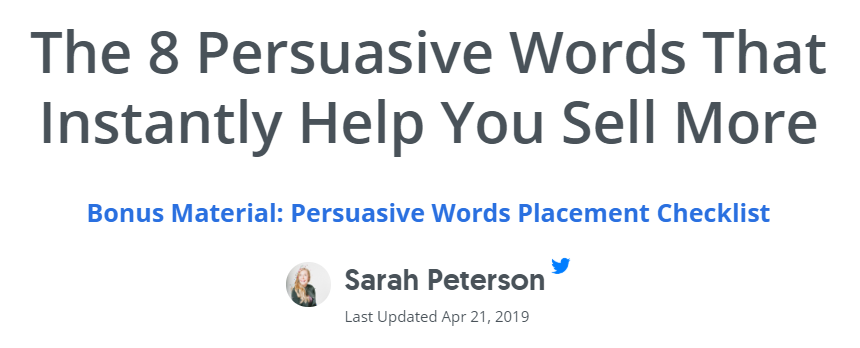
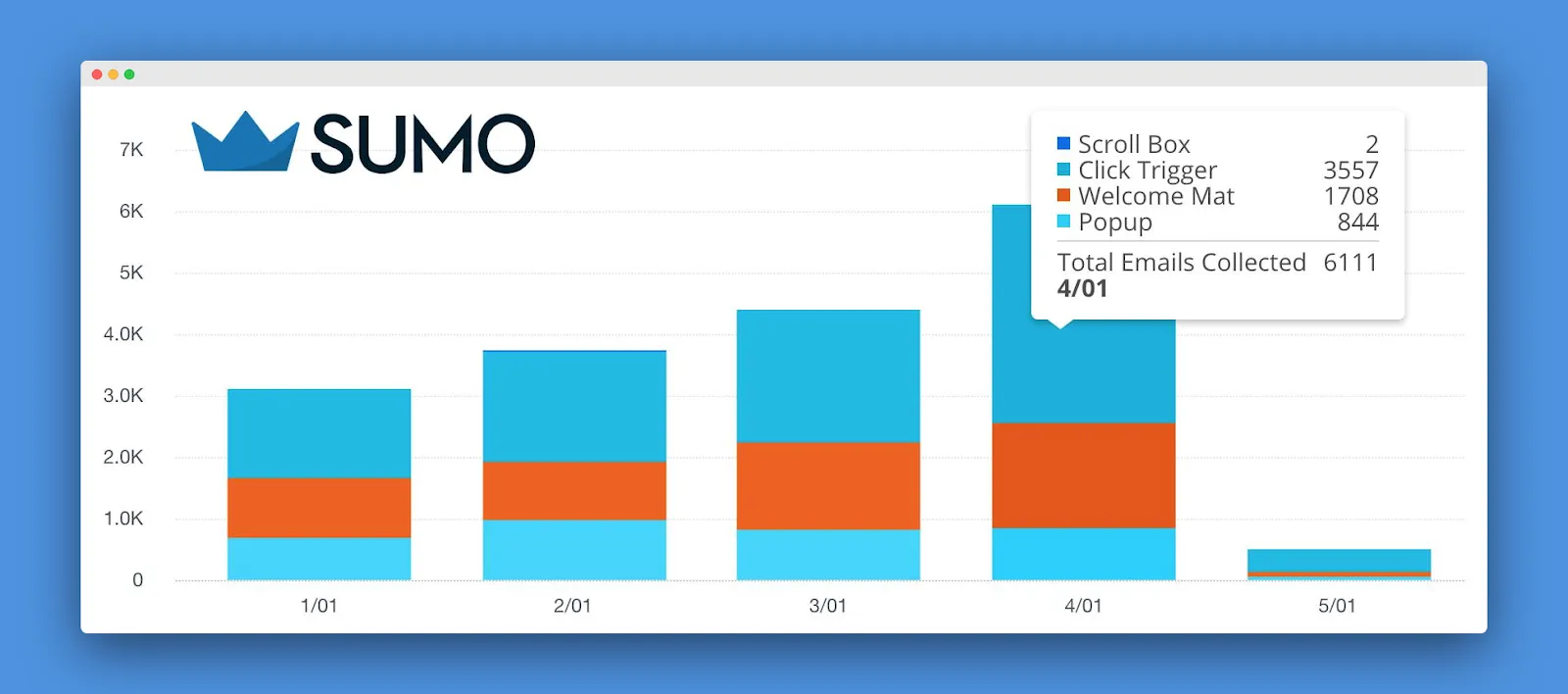


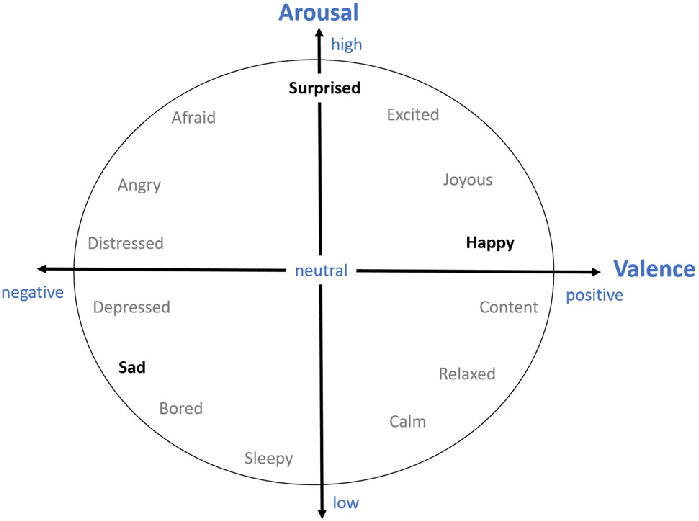

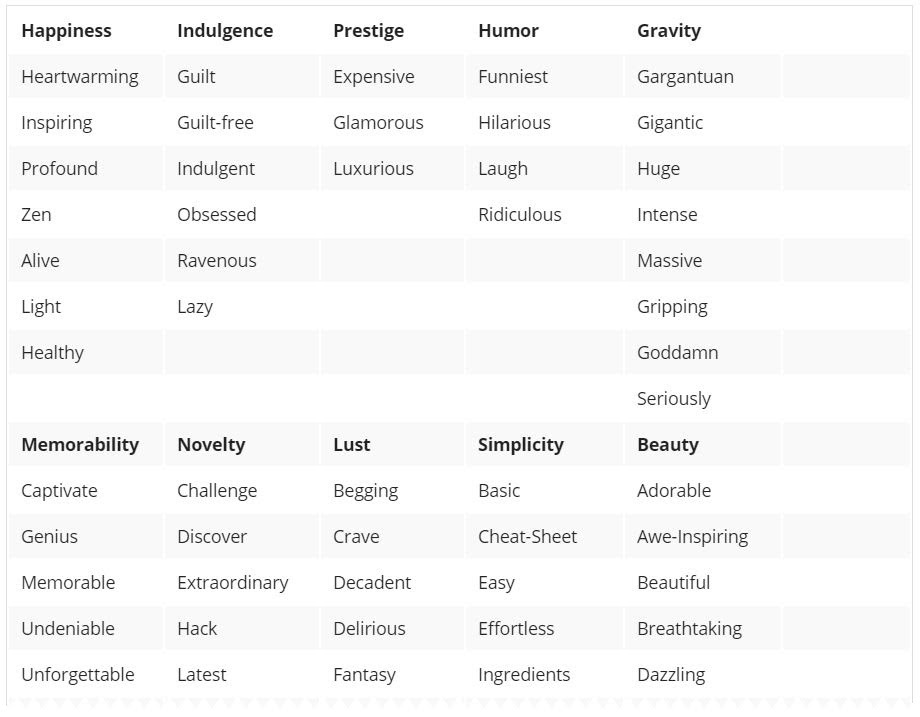
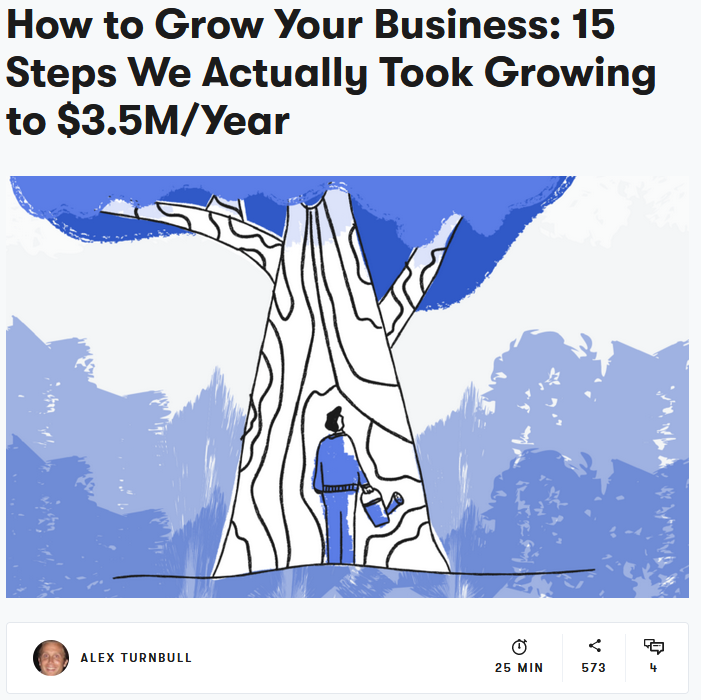
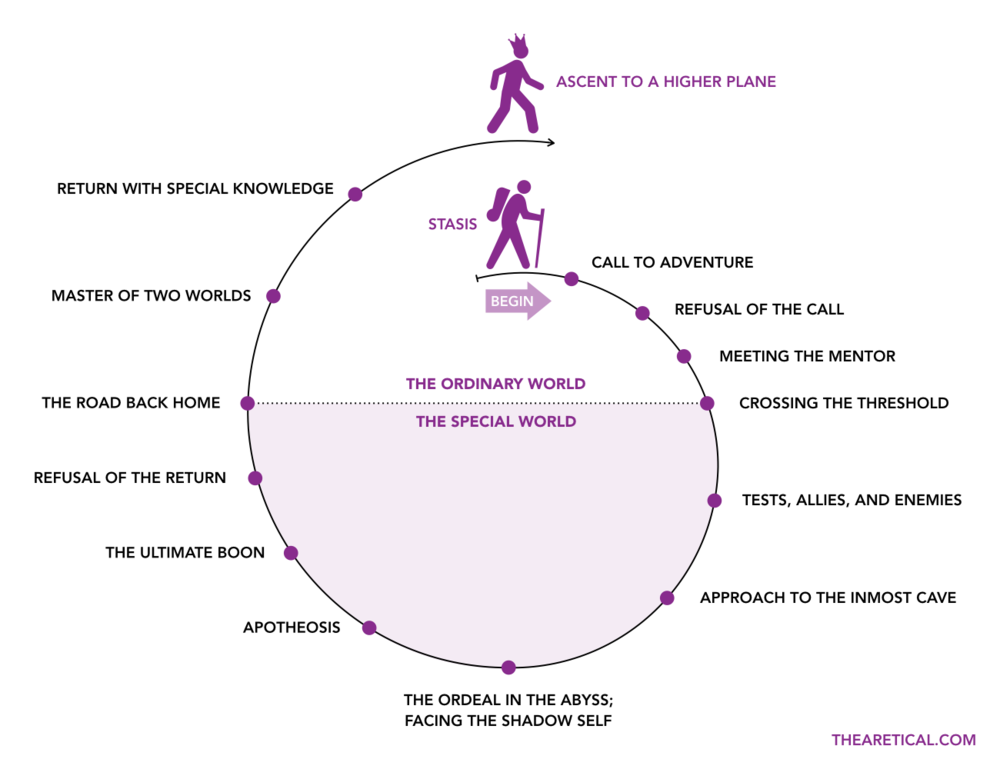
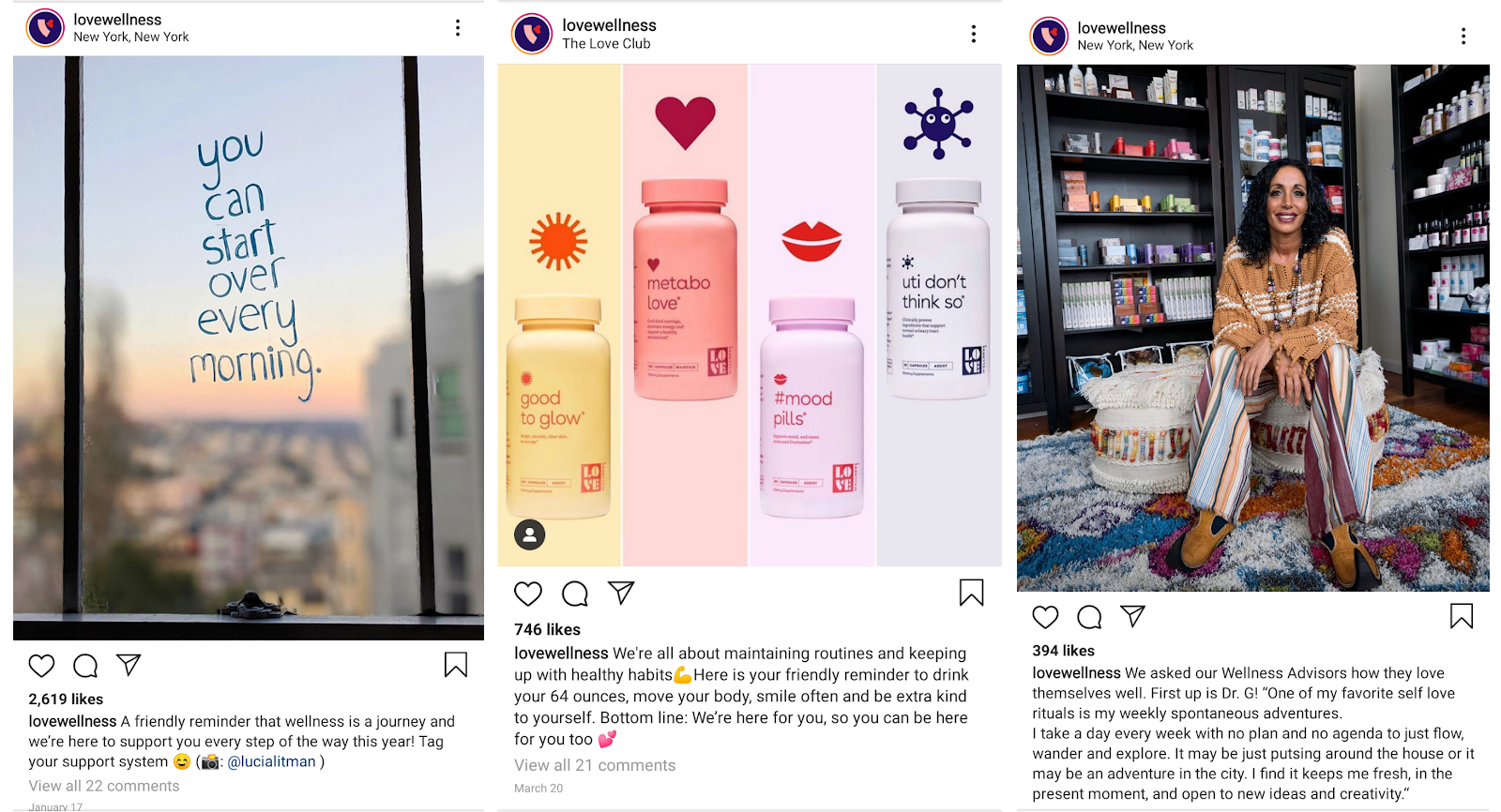
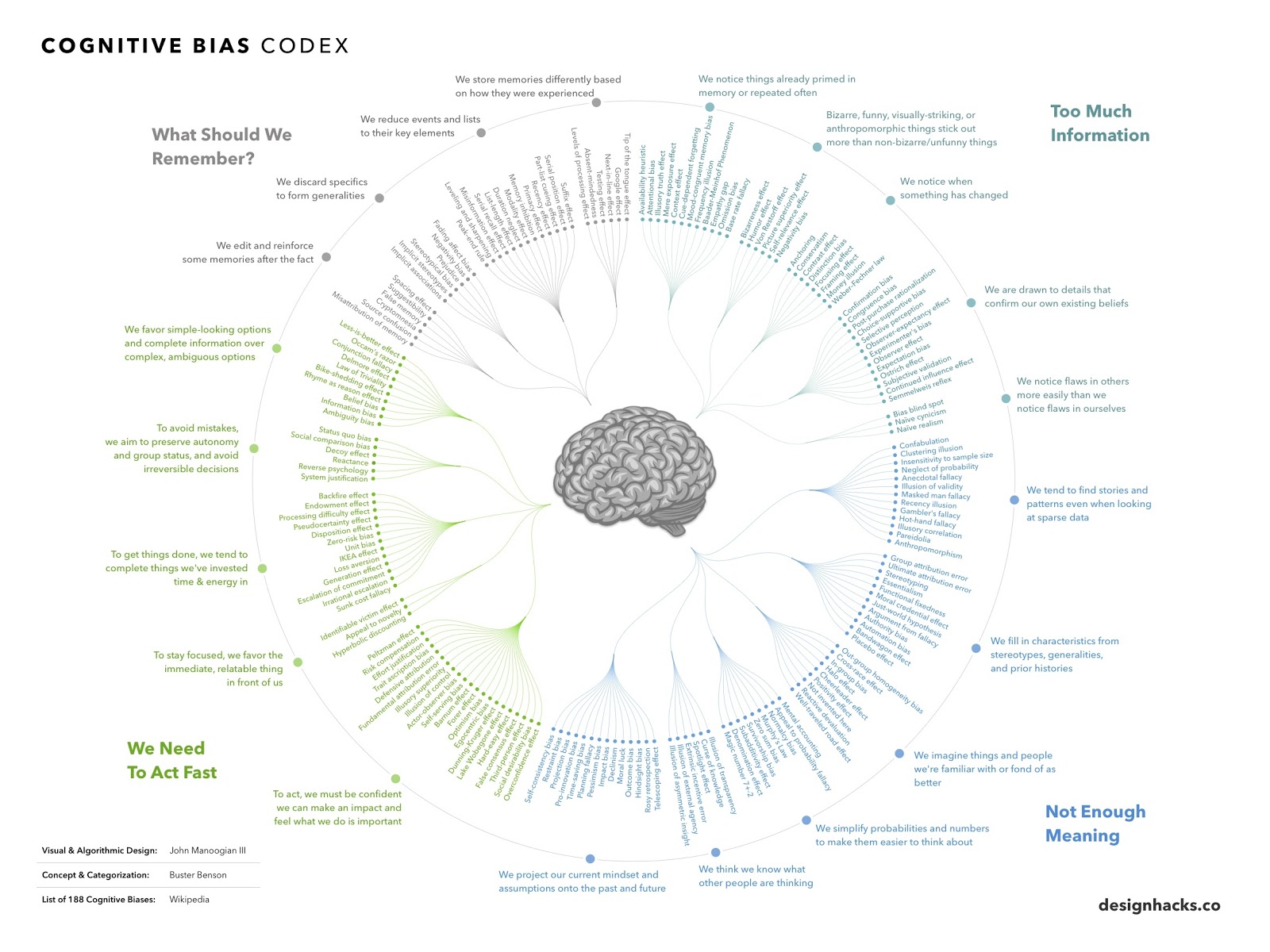
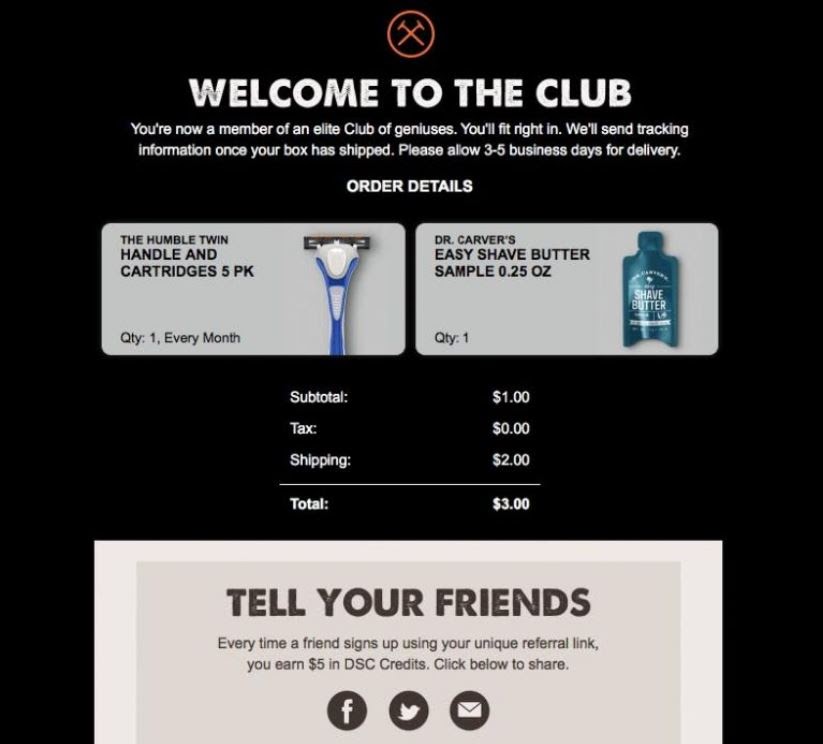

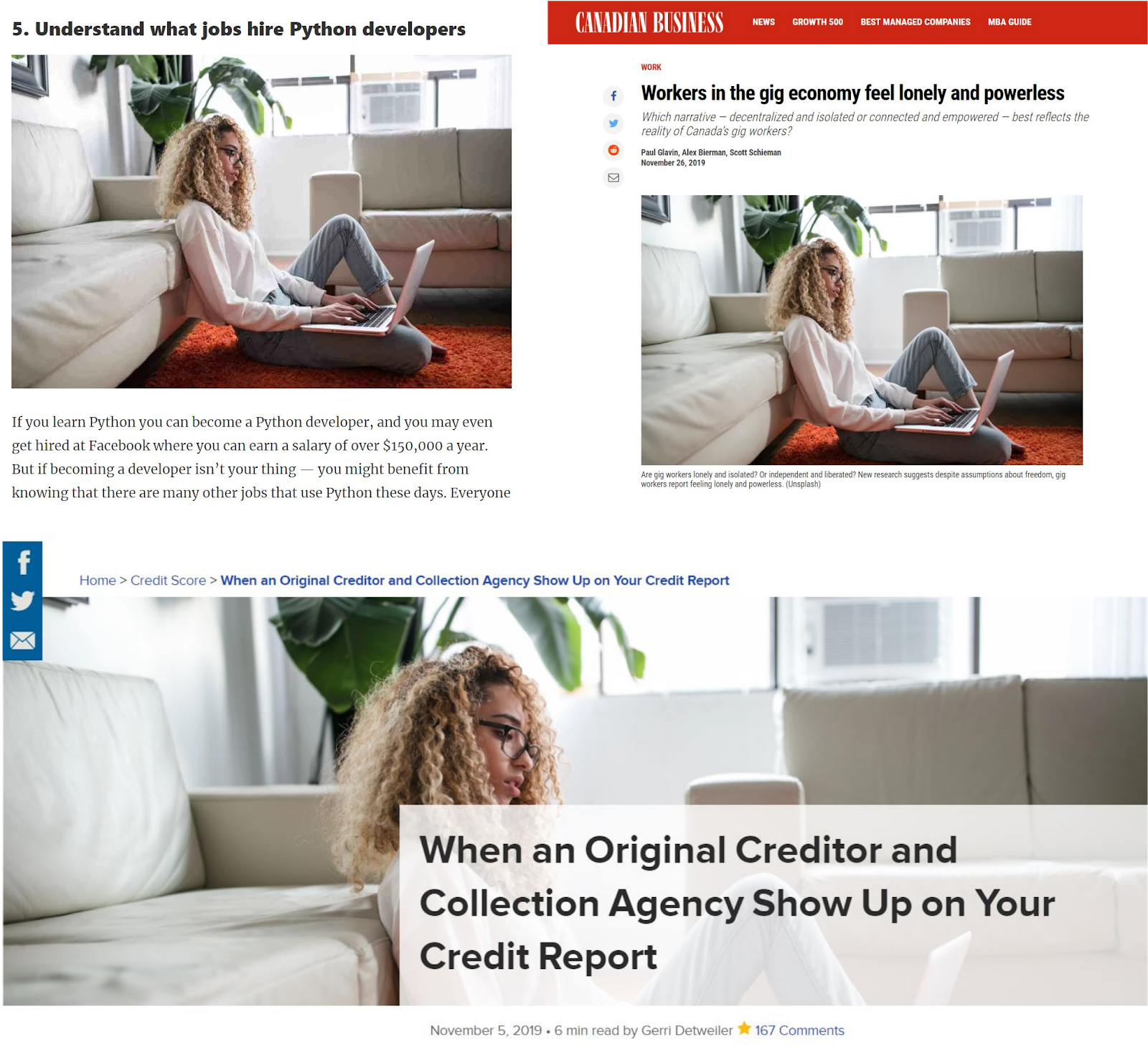



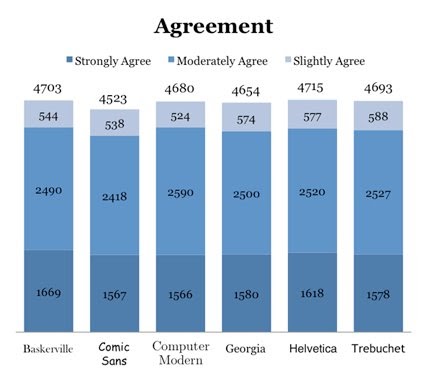
Comments